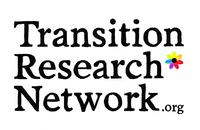Pattern Language
At the core of these guidelines is a Pattern Language. This is based on a radically participatory approach to architecture developed at the Center for Environmental Studies at Berkeley University in the 1970s. A separate entry about pattern languages gives more information on this approach, why we decided to use it in this project, and other useful applications.
In our research guidelines, each pattern describes a way to address a situation that experience tells us is likely to arise in Transition research. The language shows how the patterns tend to connect. By following the connections among patterns, it should be possible to assemble a custom set of guidelines for any collaboration between Transition groups or projects and researchers.
Organisation of the Language
We originally constructed the patterns as four levels based on their scope of application, from broadest to most specific. These groupings are loose and overlapping rather than rigid. The 'Scope' card on each pattern indicates which level it belongs to.
(1) Values
(2) Principles
(3) Approaches
(4) Practices
Pattern Development
Patterns develop through three stages.
Bud patterns are in their initial stages, and consist of no more than a name and a brief summary. A pattern at this stage may be just an idea requiring verification and further development, or it may simply be one that has not yet had the details built up. By default, a newly created pattern starts as a bud, and may be promoted to flower and later fruit.
Flower patterns have most or all of their elements in place, but are still under active development by the design team. They may be lacking a full account of the evidence or sources, or their position in the language and relationship to other patterns may not yet have been determined. Comments and additional information are particularly useful at this stage.
Fruit patterns are in a form the design team consider complete: full described and references, potentially ready for publication in a printed document or other fixed form. This may not be the final or definitive version: patterns are dynamic and evolving, and may change at any time, and fruit patterns are still open to discussion.

